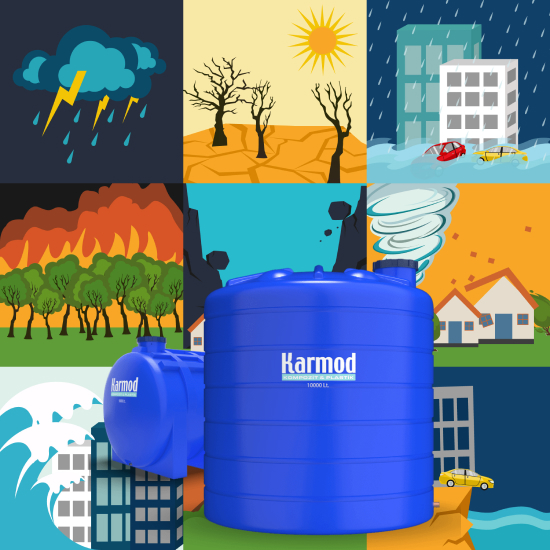Storage products are a type of tank used for storing and protecting water or any other substance. They are usually made of materials such as plastic, steel, or polyester, and can be used for storing, transporting, filtering, or purifying water. A water tank can also be used for filtering, purifying, or storing water in addition to storing it. Along with storage products, we may experience many emergency situations. As the top priority in emergency preparedness, it is recommended to fulfill the following items:
Taking measures to prevent or reduce emergencies
For example, taking preventive measures for natural disasters such as earthquakes, fires, floods, or taking measures to prevent or reduce environmental hazards. Taking necessary measures to ensure that people can safely evacuate from their homes, workplaces, or other safe areas when emergencies occur, or protect themselves from the effects of emergencies. These measures should be taken separately for many different disasters. Employees or household members should be trained to be aware of this issue.
Analyzing the possible effects of emergencies and reducing these effects
For example, opening roads after earthquakes, providing basic services such as water and electricity. For example, taking necessary measures to ensure that people can safely evacuate from their homes, workplaces, or other safe areas when emergencies occur, or protect themselves from the effects of emergencies.
Establishing and training emergency management teams
Establishing and training emergency management teams to respond quickly and effectively in the event of an emergency. However, since this requires a very large budget, unless it is a legal obligation, it is quite difficult to train and keep such a team ready.
How Should Water Storage be Used in Emergency Situations?
The use of storage in emergency situations is important to meet people's basic needs. Since access to storage may be interrupted during emergencies, it is important to be prepared in advance. The following suggestions can be made for the use of storage in emergency situations. One of these suggestions is to fill the tank in advance. Since access to the tank may be interrupted during emergencies, it is important to fill the tanks in advance. Indeed, the most common situation is water outage.
Our next recommendation is to check the tank frequently. Because content that stands still constantly can become ineffective or evaporate. Checking the tank's fill level frequently allows for monitoring and refilling of water stocks when necessary. In this case, the contents should be frequently emptied and the tank should be cleaned. The tank should be selected according to its contents. Plastic vertical water tank models are recommended for fire extinguishing contents because their chemical resistance is high. Whether it is chemical or organic storage, the tank needs to be cleaned frequently to maintain the quality of the water and contents, thus preventing the formation of bacteria in the tank. After cleaning, closing the tank prevents water from getting dirty or the tank from being stolen.
Another suggestion is to have a backup tank for the tank you have. Since access to tanks may be interrupted during emergencies, it is important to use them as backup tanks. It is important to create a backup plan for the tank in advance of emergencies and to implement this plan. In this way, you can quickly take the necessary measures to meet your water needs in emergencies.
The use of tanks in emergency situations is quite common. You can choose the size of the tank according to the amount of water or contents that can be stored. It can vary depending on the size and capacity of the tank. For example, a tank used for a house can usually be between 1000 and 5000 liters, while a tank used for a factory can be between 10,000 and 100,000 liters. You can trust our reliable brand and view our models through our website.


 EN
EN
 DE
DE
 FR
FR
 IT
IT
 ES
ES
 PT
PT
 RU
RU
 AR
AR
 BG
BG
 SR
SR
 GR
GR
 SQ
SQ
 RO
RO
 PL
PL
 HU
HU
 CZ
CZ
 HR
HR
 AZ
AZ
 GE
GE
 AM
AM
 IL
IL
